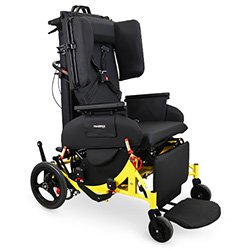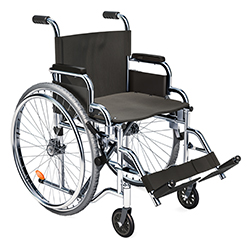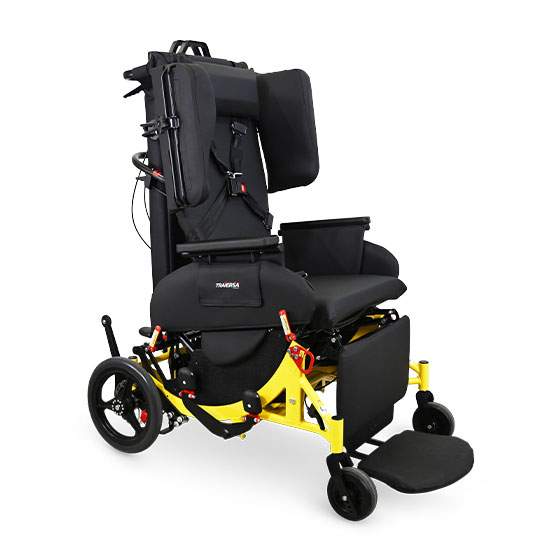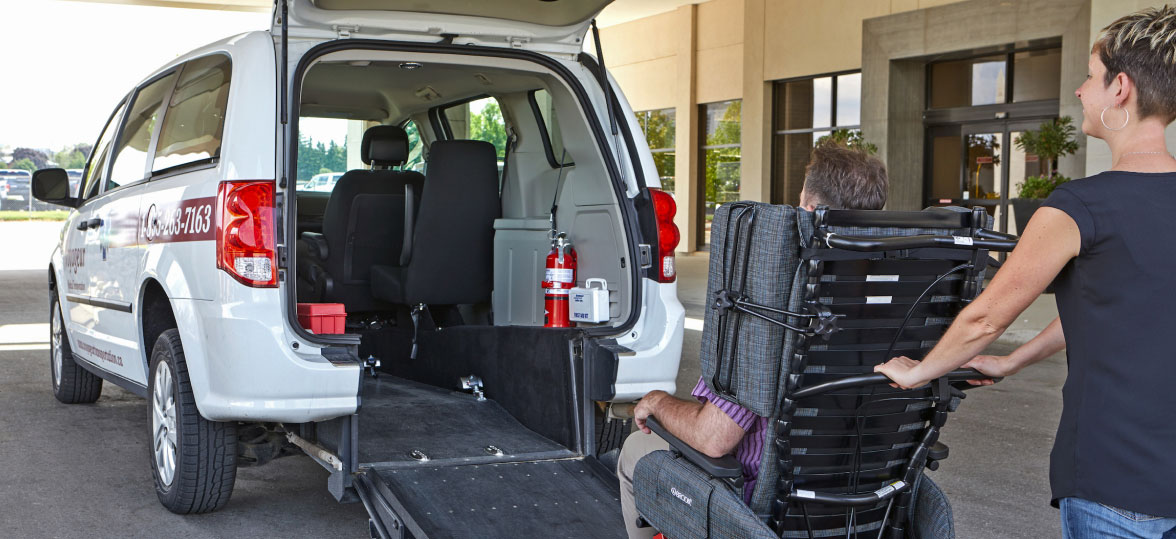Transport wheelchairs are pivotal in making mobility easier for individuals with limited movement. There are many options on the market that provide a practical solution for transportation needs, but are they all equally safe? Without the right safeguards, both wheelchair users and caregivers can face unnecessary risks during vehicle travel. This guide dives deep into the most important safety features to prioritize when selecting a transport wheelchair—and how to evaluate them effectively.
Why Safety is Important in a Transport Wheelchair
Vehicle travel is inherently dangerous. From distracted drivers to road hazards, there are so many potential accidents waiting to happen. In the event of an accident, people riding in a wheelchair are more at risk of injury than a passenger in an original vehicle seat. Not all wheelchairs marketed for “transport use” have been crash tested, so it’s important to see past the surface and evaluate whether the equipment has been proven safe.
Transport wheelchairs must also be safely versatile in various settings, such as hospitals, airports, and outdoor settings. They need to handle both smooth and uneven terrain while maintaining stability and ease of use. Slippery surfaces, inclines, and crowded spaces all present potential hazards. This makes choosing a wheelchair with comprehensive safety features essential—not just for the user’s comfort but also for the peace of mind caregivers depend on.
When safety becomes a priority, you’re not just investing in a product. You’re ensuring confidence and dignity for the individual using it while making caregiving more manageable and stress-free.
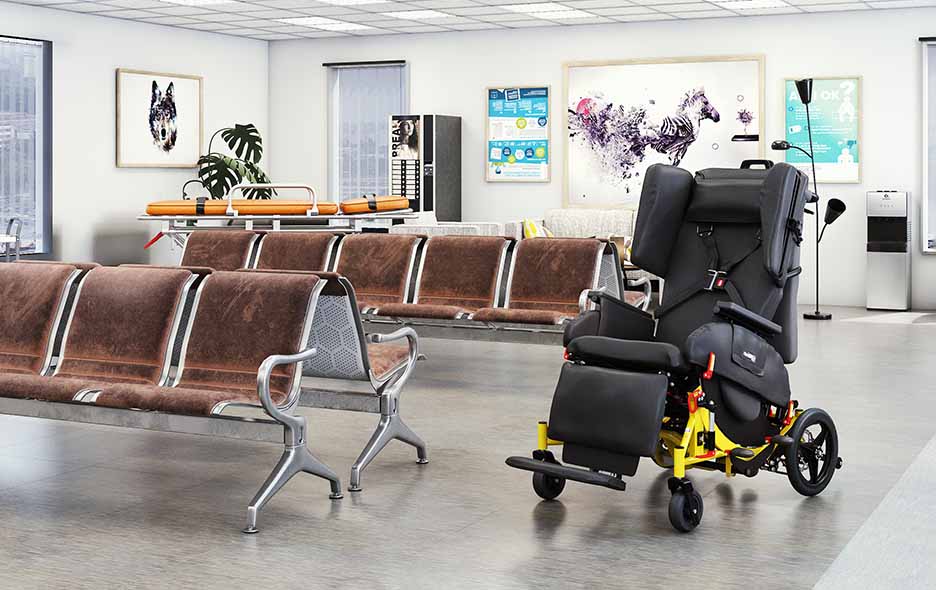
Key Safety Features to Prioritize for Transport Wheelchairs
To make your purchase worthwhile, here’s a breakdown of the crucial safety features every transport wheelchair should offer, with tips on how to evaluate them effectively.
1. Crash Testing and WC19 Certification
The first feature to confirm on your potential new transport wheelchair is whether it has been crash-tested and WC19 certified. The WC19 certification is the highest standard for wheelchair transportation safety. To comply, a wheelchair must have a four-point, welded securement bracket system and must pass a 30 mph, front-impact crash test.
2. Secure and Reliable Braking Systems
A secure braking system is the foundation for wheelchair safety. Adequate brakes prevent the wheelchair from moving unexpectedly when stationary and provide stability on slopes or uneven terrain.
- Hand Brakes for Caregivers: Ensure that the handbrakes are ergonomically designed—easy to grip and apply without requiring excessive force. The Traversa Transport Wheelchair offers an excellent example of this feature.
- Locking Mechanism: Look for wheelchairs with reliable parking brakes that keep the wheels locked while the chair is stationary. Test the locking system by attempting to move the chair when locked; it should not budge.
- Durability: Opt for models with strong brake materials, such as high-grade metal or reinforced plastics, to minimize wear and tear.
3. Seat Belts for User Security
A seat belt ensures that the user stays securely seated, especially during transportation on uneven paths. This is particularly useful for individuals who may not have full control over their upper body.
- Adjustable Lengths: The seat belt should be adjustable to accommodate users of different sizes comfortably.
- Ease of Operation: Ensure the buckle system is simple to fasten and release, but secure enough to prevent accidental unbuckling.
- Padding for Comfort: Check for seat belts that are padded to avoid discomfort during prolonged periods of use.
4. Anti-Tip Mechanisms for Stability
An anti-tip feature is a must-have to prevent the wheelchair from tipping backward, especially when navigating vehicle ramps, lifts, hills, and curbs.
- Rear Anti-Tip Bars: Check for bars or extensions at the back of the wheelchair designed to prevent excessive leaning.
- Test Its Effectiveness: Push the wheelchair slightly backward to ensure the anti-tip mechanisms engage effectively and keep the chair stable.
- Detachable or Adjustable Options: Some users prefer detachable or adjustable anti-tip mechanisms for added flexibility. Choose one that aligns with your preferences.
5. Durable and Sturdy Frames
A transport wheelchair’s frame determines its ability to withstand weight, frequent use, and occasional bumps. An inferior frame might not only wear down faster but also compromise user safety.
- Sturdy Materials: Aluminum frames are lightweight yet durable, while steel frames provide extra strength, but may add weight. Determine whether weight or durability is more important for you!
- Weight Capacity: Ensure the wheelchair’s maximum weight capacity is appropriate for the person needing transportation.
- Condition Checks: If purchasing second-hand, inspect for signs of rust, cracks, or structural weaknesses.
6. Ergonomic Design for Comfort and Control
Comfort is a critical part of safety. An uncomfortable user is more likely to shift positions frequently, increasing the risk of falls. Similarly, the wheelchair’s design should minimize strain on caregivers who are pushing it.
- Padded Seats and Back Supports: Comfortable surfaces reduce pressure points and improve the user experience.
- Handles for Caregivers: Ergonomically designed push handles provide a better grip, reduce wrist strain, and lower the chance of losing control.
- Footrests: Adjustable footrests help users maintain proper posture and prevent feet from dragging or catching on the ground.
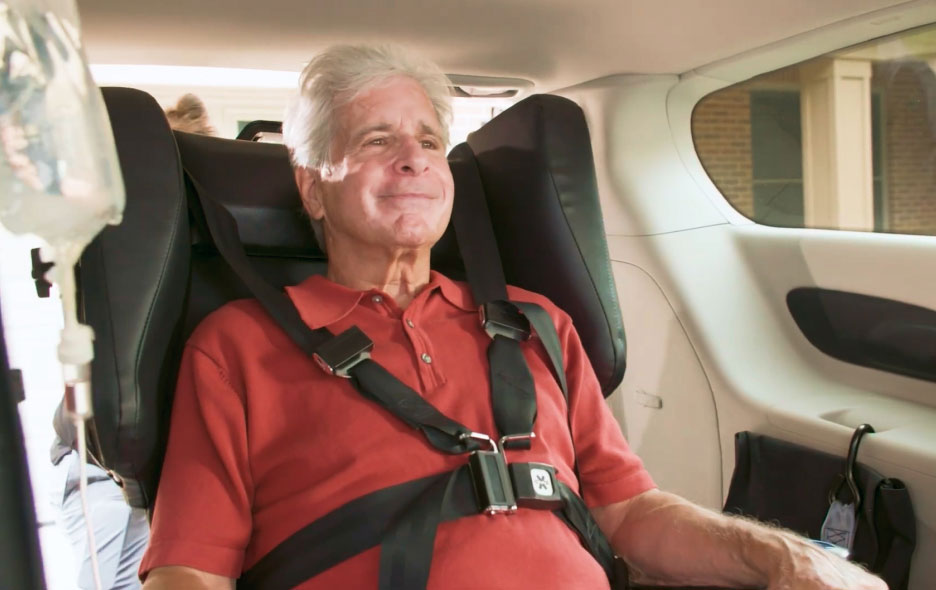
Practical Tips for Evaluating Safety Features
When shopping for a transport wheelchair, simply knowing the features isn’t enough. Here’s how to ensure you’re getting the best safety performance.
Test in Real-World Scenarios
If possible, test the wheelchair on different terrains, including slopes, grass, and pavement. Doing so can reveal how well the brakes, anti-tip mechanisms, and frame hold up. Contact your local medical equipment dealer to try a demo.
Read User Reviews
Look for feedback from actual users and caregivers to understand the long-term durability and functionality of specific models.
Consult Professionals
Physical therapists or mobility experts can guide you toward brands and models that are known for safety and reliability.
Confirm Warranty and Return Policies
Check the manufacturer’s warranty for defects or issues with safety features. A strong warranty allows you to replace the wheelchair components if they don’t perform as expected.
Inspect Before Buying
Especially when purchasing in-person, closely inspect the wheelchair for loose screws, defective brakes, or any signs of damage.
Red Flags for Wheelchair Transportation Safety
Here are some common danger signs that indicate a transport wheelchair is unsafe for use in a motor vehicle.
- No Securement Brackets – If there is nowhere to hook the securement straps but to the wheelchair frame or footrest, that wheelchair is not safe for vehicle transport.
- Missing Seat Belt – If the wheelchair doesn’t have a seat belt built into the wheelchair frame, it’s not a good idea to use it in a moving vehicle.
- Flimsy Materials – Cheap plastics and poor-quality fasteners guarantee a wheelchair won’t hold up in the event of a crash.
- Short-Term Warranties – Beware of wheelchairs that have warranties of a year or less. These can be indicators of poor quality.
- Poor Comfort – If the wheelchair has a hard seating surface, causes pinch points, or forces the passenger into an uncomfortable posture, it’s likely to cause injuries like pressure wounds.

The Role of Safety in Enhancing Confidence
Choosing a transport wheelchair with robust safety features doesn’t just protect against accidents—it builds confidence for both the user and the caregiver. A well-secured individual feels more stable and willing to use the wheelchair regularly. Similarly, caregivers can focus on providing care without constantly worrying about potential safety hazards.
Safety features in a transport wheelchair aren’t just “nice to have”—they’re essential. Brakes, seat belts, anti-tip mechanisms, durable frames, and ergonomic designs all contribute to a safer, more comfortable experience. By taking the time to evaluate these features and test their functionality, you’ll make your investment worthwhile for years to come.
Remember, your priority should always be peace of mind, ensuring that every ride is as secure and enjoyable as possible for everyone involved.
For Safety & Comfort, Try the Traversa!
The Traversa Transport Wheelchair sits at the intersection of safety, comfort, and reliability. With the Traversa, you benefit from Broda’s 40+ years of seating experience with a strong, durable, and easy-to-use solution that will last for years to come.

